The intake process is a routine part of business. Intake processes vary depending on your line of business — like when a medical office accepts a new patient, a lawyer evaluates the needs of a prospective client, or an insurance company makes its initial assessment of the coverage needs when a customer makes an inquiry — but the basics are essentially the same.
Many businesses have some version of an intake process for new clients. You can think of it as the necessary follow-up to a successful marketing campaign. There’s no point in spending time, creative energy, and money on a marketing campaign unless you have a strategy for interacting with people who respond to the campaign.
Your client intake process involves the steps you take to greet and evaluate the people who initially contact your business. Many companies are inexplicably laid back about responding to this initial contact, while it’s a top priority for others.
Developing an intake process that’s considerate of the potential client’s time — while also gathering the necessary information to evaluate their needs — is an important business capability. There’s no disputing that focusing on good customer service encourages customer loyalty and referrals, both of which enhance your brand.
It’s important to keep in mind that the customer is judging their experience from the first moment of contact, no matter how that first contact happens. Your client intake process often creates the first impression customers have of you and your company.
This is the one opportunity you have to introduce your business to the client and learn how you can shape your offering to win their business. Let’s look at a few use cases and some important tips for creating a client intake process that works best for your situation.
The online intake process
For many businesses, new customers will make the first contact online, perhaps on a company website or by clicking on the “get more information” link in an online ad.
Online customers are notoriously impatient, so a website that’s slow or unresponsive can result in a fatal first impression. Put in the work to make it easy for visitors to navigate your website and follow up with you. Anything less will drive them away before you even know they were interested.
An initial prospect intake form encourages your site visitors to share some helpful information with you — such as their name, email address, company website, and what prompted their inquiry. It’s a good idea to make sure you ask for enough information to help you determine if the prospective client is a good match for your product and services.
If more than a few people who aren’t a good fit are contacting you, that’s a sign your marketing material is confusing. Make it clear what your offer is so that the people who contact you are on the right track from the start. This saves everyone time and avoids making people feel that your marketing material is misleading.
Patient intake process that enables HIPAA compliance
The patient intake process, whether it’s for a new patient registering with a general practitioner or for a hospital transferring a patient to another facility, must comply with the Health Insurance Portability and Accountability Act, commonly known as HIPAA.
The patient intake process is regulated by HIPAA, which not only imposes stiff penalties for violations of patient confidentiality but also mandates specific requirements on how covered entities handle information to avoid data breaches.
To give patients the best care possible, healthcare providers need a lot of information about them. The patient intake process, whether medical or dental, often requires the patient to complete a long form disclosing preexisting conditions, prescriptions, insurance information, family health history, habits such as smoking, and so on.
Jotform offers patient intake templates to enable HIPAA compliance, making the process easier for both patient and practitioner.
Another way healthcare providers can make things easier for patients is by providing telemedicine or telehealth services, which have become more common as a result of the coronavirus pandemic. Medical practices can operate more efficiently and provide better care by using online intake forms that help with HIPAA compliance for telehealth services and to follow up with patients after an appointment.
The federal Department of Health and Human Services has issued guidelines for telemedicine that help with HIPAA compliance, and many of these are likely to become permanent, so it’s important to be aware of these guidelines as you build your intake process.
The new client intake process for law firms
Law firms need to collect a lot of information from new clients during the intake process to develop and execute a solid legal strategy. In addition, they need to keep all client information confidential. Attorneys aren’t allowed to reveal any client information without consent, and law firms have a duty to securely maintain client records.
But many law firms are small businesses with just a few lawyers or even a solo practitioner. If that’s the case for your firm, how can you easily gather the information you need and keep it secure?
One way is to expedite the new client intake process and simplify recordkeeping by adapting a customizable Jotform law office client intake form for your practice when a new client contacts your office.
An effective new client intake process accomplishes several key goals. It helps your law firm screen clients so you can accept those you can help and refer those you can’t to another attorney who would better meet their needs.
The intake process also provides the basic information you need to determine what resources — legal hours, expert testimony, translators, investigators — will be necessary for you to provide sound representation.
Last, but perhaps most important, the new client intake process should provide the client information about what legal services will cost. That can help determine whether the client will be capable of paying for your services.
The intake process for other businesses
Even if your business doesn’t have specialized requirements for collecting new client information, you often need specific information to begin providing service. A client intake form is an efficient and professional way to gather everything you need to open a file on a new customer.
The client intake process is fundamental to beginning a successful, long-term relationship with the client. It gives you an opportunity to discover which services would most benefit your new customer — including those they haven’t considered. Even if you don’t offer all of the services they need, referring them to other trusted professionals will help you earn their trust and respect.
Having an effective client intake process can also help you with risk management. When you carefully document your client communications — especially when the client approves key items such as estimates, deposits, and so on — you can avoid any disputes that could develop.
Be sure to make it clear to your clients during your intake process that they’re responsible for the accuracy of the information they provide. Noting this on an intake form that they sign can help protect you if problems develop as a result of them giving you inaccurate information.
Remember that a streamlined yet thorough client intake process is an asset to your brand. You want to collect all the information you need to be successful without making the process difficult for your new customers.
The intake process as the top of the sales funnel
Our focus to this point has been on the intake process as the collection of necessary information from new clients. The examples we’ve explored are all about working with a client who has chosen your services. That process begins when your marketing has caught a customer’s attention and they’re ready to do business with you.
Clearly, the intake process is a very elastic customer interaction tactic, and it can actually begin much earlier than we’ve described so far. Online marketing has made it possible to subtly start the customer intake process earlier — and with better results. That’s why websites for a product or service invariably have some version of a ”click here for more information” tab.
Clicking that tab implies there’s an agreement between you and the prospective customer. In exchange for more information — or a free webinar, newsletter subscription, e-book, etc. — the customer agrees to provide you with the information you need to continue marketing to them.
Unsurprisingly, the wording is always more delicate in the marketing material, but that’s the agreement reduced to its essential terms. The customer provides, at a minimum, their name and email address. This is their crucial first step into the sales funnel.
Designing this type of intake process requires deep empathy for the potential client. Data, plus your own experience and intuition, will help you decide how much value to offer in exchange for whatever information the potential customer is willing to share. Do they value your newsletter sufficiently to give you their name and email address?
Your potential customer knows that every bit of information they hand over is another step toward making a purchase. The trick is to ask them for the minimum information necessary to keep moving them to the next stage of the sales funnel.
It’s common practice for brands to frontload the value they offer just to get that minimum amount of information. This is why prospective customers can view a webinar or receive a book packed with information just for supplying their name and basic contact information.
Even when you offer something really great, high customer attrition is a fact of life at this initial stage. Don’t be discouraged. Keep tweaking your offering, content, target market, and so on. Keep experimenting, tracking the results, and pondering the data. Eventually, you’ll optimize your processes and increase the number of leads who respond favorably.
As every sales professional knows, sales is a numbers game. No matter how good your product is or how desirable your services are, it’s likely that only a fraction of the people who express initial interest will ultimately buy.
The first step to increasing your sales is to get as many potential customers as possible to complete the customer intake process. That’s why you need a good intake process — it’s where your sales funnel begins.
The intake process for volunteers at nonprofits and charities
Dedicated volunteers do some of the most important work — staffing food banks, delivering meals to people who are housebound, tutoring disadvantaged youth, visiting the sick and lonely in hospitals — for nothing in return but the joy of helping others. Nonprofits that seek committed volunteers need an intake process that, early on, helps potential volunteers determine if they have the stamina and time to be effective.
In many ways, this intake process is the opposite of the sales funnel intake process. Whereas marketers worry about asking too much from prospective customers for fear of scaring them away, organizations seeking long-term volunteers are inclined to ask for a lot of information up front:
- How many hours per week they can volunteer
- Which shifts they can staff
- Whether they’re willing to do hard work — like moving boxes and stacking supplies
- If they’re willing to volunteer their professional skills — such as an attorney working pro bono by representing tenants facing eviction.
Though this is a lot to ask, you won’t accomplish anything by being indirect.
The purpose of the volunteer intake process is to determine who really will do what your organization needs help with. Jotform has many volunteer registration templates that can help you get an effective intake process rolling quickly. You can easily customize them for specific situations, such as asking parents to chaperone a school dance or club members to help out at a fundraiser.
A good first impression
As the old saying goes, you only get one chance to make a first impression. The intake process — no matter where, when, and how an organization uses it — often creates the first impression for individuals interacting with the organization as customers, clients, employees, volunteers, and in an infinite variety of similar roles. A carefully crafted, constantly improved intake process will increase sales and boost success.
























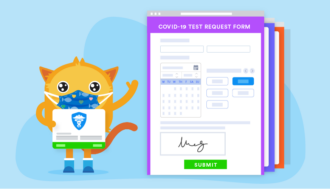















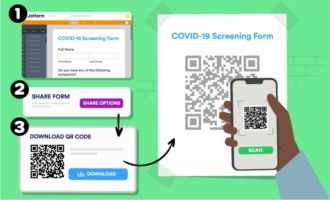









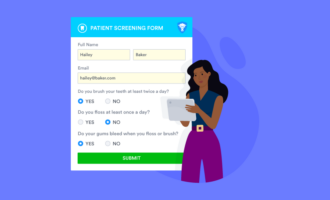









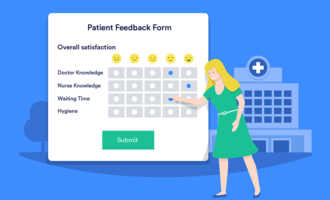








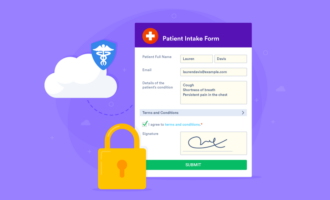







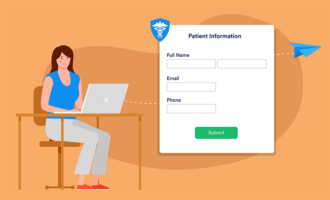

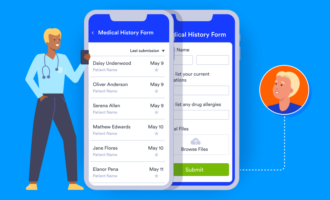












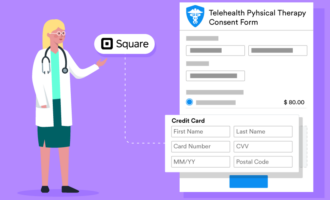















Send Comment: